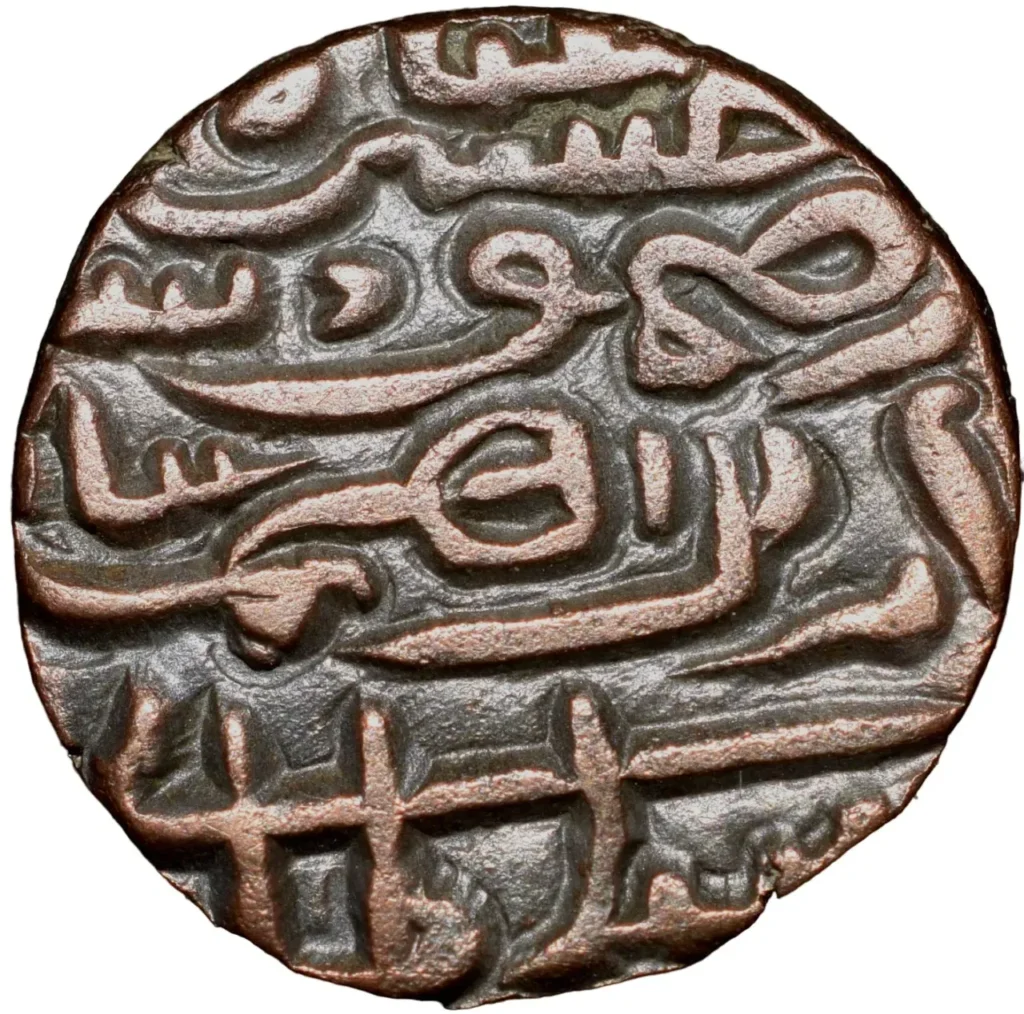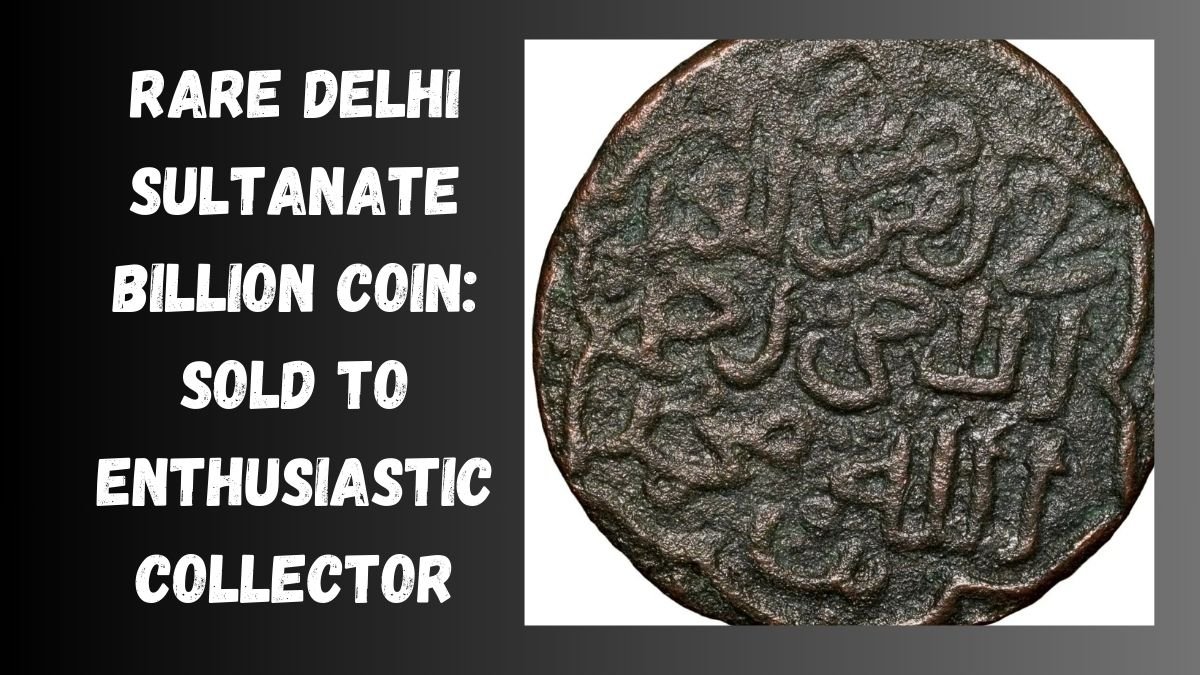In Delhi Sultanate-the most prominent part of Indian history which lasted for over four hundred years (1206–1526)-emerges an unexampled, fascinating system of coinage. Coins issued by this regime hint at the polities, culture, and economy prevailing in medieval India. The rarest among such coins is indeed the billion one, for this has really struck the imagination of collectors and historians. The extremely rare billion coin from Delhi Sultanate was just auctioned to a keen collector but revived interest in this very fascinating numismatic treasure.
We now turn towards history, widening the coinage and significance of coins of Delhi Sultanate all while keeping within the phenomenon that is a billion coin uniqueness. Among these, factors we will address are why in the eyes of collectors this is a special coin and what forces have driven the coin relatively rare and of considerable historic value.
Delhi Sultanate Legacy
The Delhi Sultanate is the medieval Islamic empire that conquered much of the Indian subcontinent. Several dynasties ruled the land, including the Mamluk, Khilji, Tughlaq, Sayyid, and Lodi. In turn, each took over in progressing the development of the Sultanate’s coinage, because a ruler’s policies reflect his aspirations, religious beliefs, and political power.
More than mere medium of exchange for this era, coins are also mediums of propaganda instruments. There one finds names and titles with religion on coins through designs and the kind of material employed. Further, coinage speaks to prosperity along with richness of culture.
Coming to a knowledge of one billion coins is quite incredible to know:
The term “billion” was defined by numismatics as the coin made of an alloy of silver with other base metals like copper or tin. This was very common for use in everyday transactions of the Delhi Sultanate period. The billion coins maintained a balance of economic effectiveness with material value, so they were issued among the people while keeping their intrinsic value.
The billion coins from the Delhi Sultanate were issued with inscriptions in Arabic or Persian, establishing the Islamic faith and the sovereignty of the Sultan. The name and titles of the ruler appear on the obverse side of the coin and religious phrases or minting details on the reverse side. In general, coins from this region were very elegant, with beautifully crafted calligraphy and patterns according to the time’s artistic feeling.
What is so special about this coin?
[also_read id=”156″]
The million coin recently auctioned was numismatic art excellence of the Delhi Sultanate. It was truly a rare, multi-fold because:
Historical Background
This coin was minted at some point in time, perhaps during some specific period during the reign of one of the great Sultans, such as Alauddin Khilji or Muhammad bin Tughlaq. Its production and distribution were decidedly influenced by the political and economic conditions prevalent at the time, and therefore, historically significant.
Striking Process
Coins of the Delhi Sultanate were mostly hand-struck. Therefore, the coins are uneven in weight, design, and quality. The sold coin is well preserved with readable inscriptions and detailed designs not found in any other surviving specimen.
Rarity:
During the centuries, many coins melted, lost, or corroded. Today, only a few billion coins of the Delhi Sultanate remain, so finding one is considered a rare occasion.
Attraction to the Collector:
These coins with fine history are precious both for the numismatists and the collectors. However, this particular special coin with all the uniqueness and a major historical milestone has caught the collector’s eye.
Delhi Sultanate Coins: Why Collectors Want Them

[also_read id=”161″]
This is the reason why the coins issued in the period of Delhi Sultanate are particularly dear to a collector’s eye:
Historic Significance :
A gold coin is one real-life interaction with India’s medieval period because one can read about the ruler who ruled back then and the way they ruled the nation.
Artistic flair:
The calligraphy and the designs are of very intricate taste, thus bringing out the great artistic skills within the Sultanate era.
Numismatic rarity:
Delhi Sultanate coins are quite rare, not to mention a good one; they add such value to one’s collection.
Value of Investment
These coins appreciate over time and, as antiques, offer monetary advantage aside from monetary history.
Characteristics of the Sold Billion Coin
The sold coin has the following characteristics:
- Metal Content: A composition of silver along with base metals that reflect economic principles of the Sultanate.
- Scripts: Arabic writing, which clearly indicate the name of the Sultan as well as Islamic expressions.
- Pattern and Calligraphy: Intricate patterns and styles, which clearly show the technical perfection of this time.
- Condition: Exceptionally preserved; no sign of much wear considering the coin’s age.
- The Sale and Its Aftermath
- This is a one billion-rupee sale of a coin to an enthusiast collector that epitomizes the resilience of numismatics regarding Delhi Sultanate. This sale of history would not only preserve the culture but brings human beings closer to the cultural riches of India. The owner of the coin may well be a collector or an archeologist or a historian with an immense love for India.
This reminds the numismatic world of how to preserve and understand coins. All coins have tales to tell and are thus helpful in knowing what happened long time ago through them.
Preservation of Numismatic Treasures
[also_read id=”160″]
The sale also reflects the fact that rare coins are preserved. There are very critical elements in terms of storage, handling, and documentation that determine whether they retain their value as well as state.
Collectors and institutions will have to co-operate on these artifacts in order for these to be availed to later generations.
Conclusion
This Delhi Sultanate billion coin will be the first landmark sale in the numismatic world-not only as an expression of the Delhi Sultanate’s historical and artistic heritage but also as a testament to the continued interest coins have as windows into the past.
For collectors and history enthusiasts, these coins are more than just relics; they are tangible connections to the stories, people, and events that have formed our world. The excitement about this sale reflects the universal appeal of numismatics and the timeless allure of rare treasures from the past.
Whether an old collector or a young one, the promise of one billion Delhi Sultanate coins will take you to great adventures through the history of your land, step by step of the coin.
FAQ’s
Q. What is a billion coin?
A. A billion coin is made from a mix of silver and base metals like copper or tin, commonly used during the Delhi Sultanate era.
Q. Why is the Delhi Sultanate billion coin rare?
A. Its rarity stems from historical significance, limited availability, and unique craftsmanship.
Q. Who purchased the rare billion coin?
A. An enthusiastic collector acquired the coin, recognizing its historical and numismatic value.
Q. What features make this coin unique?
A. The coin has clear inscriptions, intricate designs, and excellent preservation despite its age.

